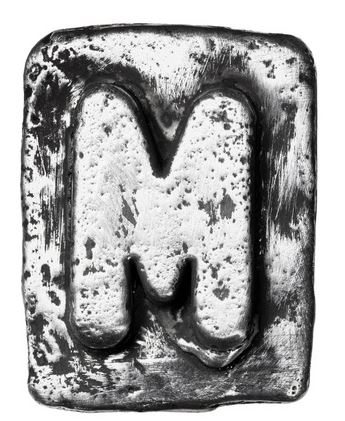 ʻOku angamaheni ʻaki ko e ngaahi naunau fefeka ʻa e ukamea ʻoku ʻiloa ʻoku faingataʻa, ngingila, ʻe lava ke ngofua hono fakaʻaongaʻí, fusible, mo e ductile. ʻI he lelei ʻa e ʻuhilá mo e thermal conductivity, ʻoku ʻaonga ʻa e ukamea ʻi ha ngaahi founga lahi pea ka ne taʻeʻoua kinautolu he ʻikai tatau hotau mamani.
ʻOku angamaheni ʻaki ko e ngaahi naunau fefeka ʻa e ukamea ʻoku ʻiloa ʻoku faingataʻa, ngingila, ʻe lava ke ngofua hono fakaʻaongaʻí, fusible, mo e ductile. ʻI he lelei ʻa e ʻuhilá mo e thermal conductivity, ʻoku ʻaonga ʻa e ukamea ʻi ha ngaahi founga lahi pea ka ne taʻeʻoua kinautolu he ʻikai tatau hotau mamani.
Kapau ʻoku ke fie maʻu ke malieʻia ho ngaahi kaungameʻa ʻi ha paati, pea ʻoku nau ʻi he "ukamea," Ko ha ngaahi moʻoniʻi meʻa mahuʻinga eni ke ʻ iloʻi.
Fakakaukau ki he kelekele ʻo e mamani– Ko e ukamea lahi taha ʻi ai ko e foila. Mālie, Ko e uho ʻo e mamani ʻoku meimei ko e ukamea– ko e meʻa ia ʻoku fakakaukau ki ai ʻa e kau saienisi talu mei he ʻikai ke ʻi ai ha taha ia ki he uho. Ko ʻeni ʻi heʻene aʻu mai ki hotau ʻunivesi, ʻOku lahi ʻaupito ʻa e ukamea mo e magnesium. Meʻa fakaʻofoʻofa moʻoni ke vakaiʻi e ngaahi palanite kehe pea sio pe ko e ha e ukamea ʻoku ʻi ai, toʻomataʻ? Mahalo te tau ʻiloʻi ha ngaahi meʻa naʻe ʻikai ke tau ʻilo naʻe ʻi ai.
Ko hono fakaʻaongaʻi ʻi he mamani, ʻOku mahuʻinga ʻa e ukamea ki hono ngaohi ʻo e ngaahi meʻa hange ko e ngaahi hala fakakavakava mo e skyscrapers ʻo hotau ngaahi kolo. ʻI he ngaahi ʻaho motuʻá, naʻe ʻi ai ha ukamea ʻe fitu naʻe ʻiloʻi ʻe he faʻahinga: koula, kopa, siliva, mercury, taki, ngeEesi mo e ukamea. ʻI he ʻAho ni, neongo ia, ʻoku tau ʻilo lahi ange, kau ai ʻa e singiki mo e foila.
ʻI ʻAmelika, ʻOku ngalingali te ke maʻu ha foila ʻi ʻAlapama, ʻAkenisoa mo Siosia, feituʻu ʻoku ʻasi ai ʻi ha ʻumea ʻoku ui ko e kaolin. Mavahe mei he U.S., ʻe lava ke maʻu e ngaahi maʻuʻanga ʻalaminiume ʻi Falanise, Samaika mo e ngaahi konga ʻo ʻAfilika.
Kuo ke mamata nai ʻi ha ngaahi fakatata polonise ʻi ha Musiume ʻaati? ʻOku ngaohi ʻa e polonise mei ha ukamea ʻe ua: kopa mo e ngeEesi.
Lea ʻo kau ki he ʻati, ʻi he taimi naʻe ngaohi ai ʻa e ʻimisi ʻo e tauʻataina, Ko ha lanu melomelo taʻeoli, ka naʻe liliu lanu mata ia ʻi ha vahaʻataimi. Naʻe hoko ʻeni koeʻuhi ko ha founga naʻe ui ko e oxidation ka naʻe tali ʻe he ʻea mo e vai ʻa e ʻu lauʻi peleti kopa ʻa e ʻimisi. ʻOua naʻa ke hohaʻa– Naʻe hanga ʻe he liliu ʻo e lanu ʻo ʻai ke malohi ange! ʻI he veʻe hala, ʻe lava ʻe he lahi ʻo e kopa ʻi ai ʻo fai 30 seniti ʻe miliona.
Kapau ʻoku ʻi ai haʻo ngaahi fehuʻi fekauʻaki mo e ukamea mo e/pe alloys, ui ʻa e ʻIkale Alloys ʻi he 1-800-237-9012.






